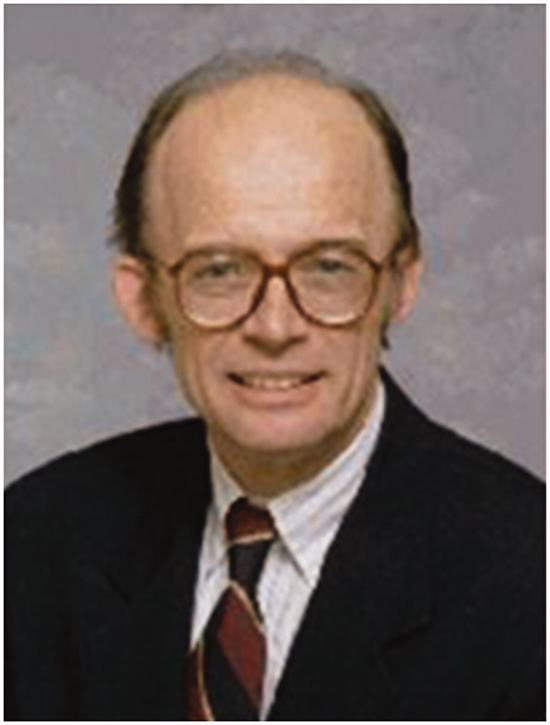
A colleague and mentor are defined by their interest and involvement with and for others. John Moulder was a great colleague and mentor. When I was a young Nephrologist, I had little understanding of what science was, or how to approach a problem, to develop a hypothesis, design experiments, then interpret the results. I was pretty good at clinical medicine, and knew the value of knowledge, but I did not know the process of advancing it. It was thus new and exciting to join John’s lab.
In the late 1980s we and others were seeing cases of acute and chronic renal failure after bone marrow transplant (BMT). At that time, John’s radiobiology work was focused on the effects of fractionation and repair in normal tissues. He had chosen kidney as a model, because kidney function can be repeatedly and easily tested. He had noticed a few papers in the literature that reported acute and chronic renal failure after BMT and their association with radiation exposure, the radiation having been given just before the BMT, to wipe out remaining cancer and also exert immunosuppression. He made the logical next step, which was to establish his model as the close analogue of what was happening to humans after BMT. He and Brian Fish published a couple of papers making that point. His clinical associate and Radiation Oncologist Dr. Colleen Lawton soon realized that John’s model and my nascent experience with the BMT cases needed further development, and she organized a combined conference at Froedtert Hospital in February 1990. John, Colleen, and I were the speakers, a trio of diverse expertise that came together on the important new topic of radiation injury after BMT. It was standing room only, all there for a true translation of knowledge between the lab and the clinic. John came to my office afterwards and asked me ‘What’s captopril?’ The rest is history.
I convinced John and Brian to use captopril with the goal of abrogating renal radiation injury. It was a simple concept, borrowed from the early experience with captopril and its congeners as treatments for kidney and heart disease. We decided on a dose, then got a steady supply of captopril from a generous drug company. It worked. It worked as a preventive agent, and also when started after the start of injury, i.e., as a therapy. We had overturned the dogma that normal tissue radiation injury cannot be treated. John’s next NIH renewal got a great score……top 3%! When he got the pink sheets, he took the day off.
Productive years of development and discovery followed. There was generous funding from the NIH, AHA, ACS, and the VA. The relevance and models extended from multifraction exposures appropriate to clinical radiotherapy to single fraction exposures that apply to accidental or belligerent irradiation. We showed the clinical benefit of angiotensin converting enzyme inhibition for both kidney and lung radiation injury. The central theme was that normal tissue radiation injury could be mitigated and that work continues now in the Radiation Biology labs at the Medical College of Wisconsin, over 30 years later.
The Moulder team included people with quite varied interests pertinent to ionizing radiation, including lung physiology, cardiovascular disease, skin, and even brain. Another was the possible health effects of non-ionizing electromagnetic fields, such as produced by power lines, cell phones and other features of modern life. Since the late 1970s John had taught about this subject at the Medical College of Wisconsin (MCW). Beginning in the early 1990s he developed three ‘frequently asked questions’ websites (FAQs) on health effects of static, power frequency, and radiofrequency fields. By January 2000, these FAQs were being accessed more than 20,000 times per month. In 2005, with his increasing duties as head of the NIH-funded MCW Center for Medical Countermeasures Against Radiological Terrorism, John reluctantly had to give up what had become a very time-consuming project. Since the possible health effects of nonionizing electromagnetic fields has been the subject of much, at times not-well-informed, public debate, John’s intelligent and critical commentaries and reviews on the subject were a great public service for many years.
Kenneth R. Foster (University of Pennsylvania), a longtime collaborator and coauthor with John on this topic, commented ‘I can speak from experience about his excellence as a scientist and collaborator. He was easy to work with, incisive and careful in his review of scientific literature, and an excellent writer.’
John provided extensive scientific editorial service for top journals, including this one, and for Radiation Research, the International Journal of Radiation Oncology, Biology and Physics, and Experimental Biology and Medicine. He served on multiple grant review groups, for the National Institutes of Health (NIH, USA), for the United States Army, and for international granting organizations in Canada, the Netherlands, and Qatar.
His mentorship and collegial interaction extended widely, to include faculty at the Medical College of Wisconsin, notably Meetha Medhora, Colleen Lawton, John Baker, Zela Lazarova, and Fritz Sieber. It went further, beyond MCW, to include his friendly competition with the late Mike Robbins, and his support and encouragement for younger colleagues Stephen Brown and J Mark Cline. John’s legacy is his work and publications, their impact on experimental Radiation Biology, and their translation to the clinic.
We are forever in his debt.
